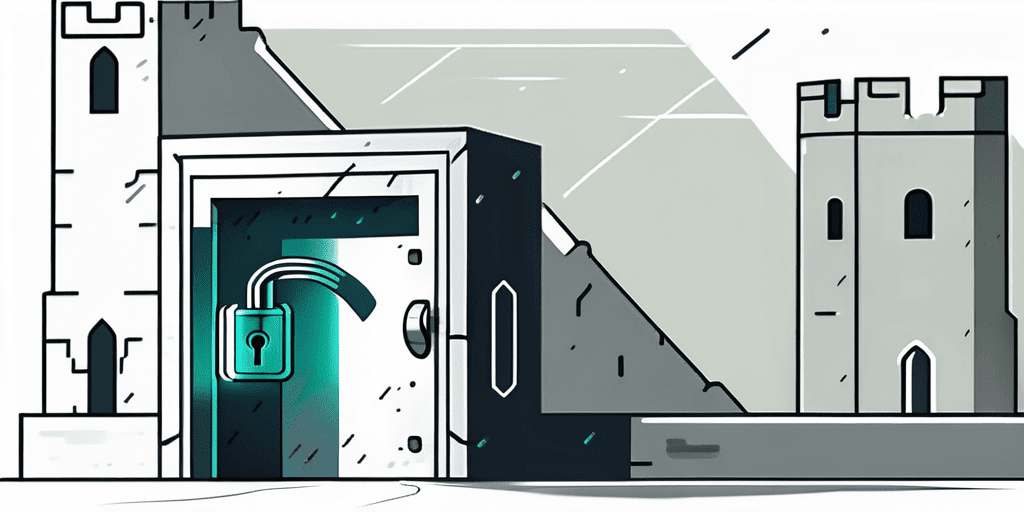Firewalls have become an essential component in network security. They act as a barrier between the internal network and the external world, filtering incoming and outgoing network traffic based on predefined rules. But how can we ensure that our firewall is truly secure? This is where firewall penetration testing comes into play. In this article, we will explore the different techniques and tips for effective firewall penetration testing.
Understanding Firewall Penetration Testing
Firewall penetration testing is the process of evaluating the security of a firewall by simulating real-world attacks. The goal is to identify vulnerabilities and weaknesses in the firewall’s configuration, allowing organizations to take proactive measures to enhance their network security.

When it comes to protecting sensitive data and preventing unauthorized access, firewalls play a crucial role in safeguarding networks. However, relying solely on a firewall without regularly testing its effectiveness can leave organizations vulnerable to potential threats. That’s where firewall penetration testing comes into play.
By conducting regular and thorough penetration tests, organizations can gain valuable insights into the effectiveness of their firewall setup. This testing process involves simulating various attack scenarios to identify any weaknesses or misconfigurations in the firewall’s defenses. It allows organizations to proactively address these vulnerabilities and strengthen their overall security posture.
The Importance of Firewall Penetration Testing
Firewalls are the first line of defense against unauthorized access and malicious activities. However, they are not invincible. Despite their robust capabilities, firewalls can still be susceptible to vulnerabilities or misconfigurations that can be exploited by skilled attackers.
Regularly conducting firewall penetration testing is crucial for several reasons. Firstly, it helps organizations identify any weaknesses or flaws in their firewall configuration. By actively seeking out vulnerabilities, organizations can take proactive measures to address them before they can be exploited by malicious actors.
Secondly, firewall penetration testing provides organizations with a realistic perspective on their network’s security. It allows them to understand the potential impact of an attack and the effectiveness of their existing security measures. This knowledge empowers organizations to make informed decisions about their security investments and implement necessary improvements.
Lastly, regulatory compliance requirements often mandate regular penetration testing. By conducting firewall penetration testing, organizations can ensure they meet these requirements and demonstrate their commitment to maintaining a secure network environment.
Basic Concepts in Firewall Penetration Testing
Before diving into the techniques and tips, it’s important to have a basic understanding of how firewall penetration testing works. The process typically involves several stages, each serving a specific purpose in evaluating the security of the firewall.
The first stage is reconnaissance, where the tester gathers information about the target network. This includes identifying the firewall’s make and model, understanding the network architecture, and gathering any publicly available information that could aid in the penetration testing process.
Once the reconnaissance phase is complete, the tester moves on to scanning. During this stage, the tester actively probes the target network to identify open ports and services. By identifying these entry points, the tester can determine potential vulnerabilities that could be exploited to bypass the firewall’s defenses.
After scanning, the exploitation phase begins. This is where the tester attempts to exploit any vulnerabilities found during the scanning phase. The goal is to gain unauthorized access to the network or compromise the firewall’s security measures. By successfully exploiting vulnerabilities, the tester can demonstrate the potential impact of an attack and highlight areas for improvement.
Finally, a detailed report is generated, highlighting the findings of the penetration test. This report includes a comprehensive analysis of the vulnerabilities discovered, their potential impact, and recommendations for remediation. The report is a valuable resource for organizations to prioritize and address the identified vulnerabilities, ultimately strengthening their firewall’s security.
Overall, firewall penetration testing is a critical component of an organization’s security strategy. By regularly evaluating the effectiveness of their firewall and addressing any vulnerabilities, organizations can enhance their network security and protect their valuable data from potential threats.
Preparing for a Firewall Penetration Test
Before conducting a firewall penetration test, it is crucial to assemble the right set of tools. There are several open-source and commercial tools available that can help testers in their endeavor. Some popular tools include Nmap, Metasploit, and Wireshark. These tools provide the necessary functionalities to perform network scanning, vulnerability scanning, and packet analysis.

When it comes to preparing for a firewall penetration test, having a comprehensive understanding of the target network is essential. This involves gathering information about the network architecture, identifying the firewall technology in use, and understanding the network’s security policies and configurations. By doing so, testers can tailor their approach and select the most appropriate tools and techniques for the specific environment.
Once the necessary tools are acquired, it is important to ensure that they are properly installed and configured. This includes setting up any required dependencies, configuring network interfaces, and verifying that the tools are functioning correctly. Taking the time to properly set up the tools can greatly enhance the efficiency and effectiveness of the penetration test.
Setting Up the Testing Environment
Creating a controlled testing environment is essential to ensure accurate and reliable results. It is recommended to set up a dedicated testing network that closely resembles the production environment. This ensures that the testing does not disrupt ongoing operations and helps in identifying any potential impact to critical systems.
Setting up the testing environment involves several steps. First, it is important to isolate the testing network from the production network to prevent any unintended consequences. This can be achieved by using physical or virtual network segmentation techniques, such as VLANs or virtualization technologies.
Next, the testing network should be populated with systems and services that mimic the production environment. This includes setting up servers, workstations, and other network devices that are representative of the target network. By replicating the production environment as closely as possible, testers can accurately assess the effectiveness of the firewall and identify any potential vulnerabilities.
In addition to replicating the network infrastructure, it is also important to simulate real-world scenarios during the penetration test. This can involve creating user accounts, generating realistic network traffic, and simulating various attack vectors. By doing so, testers can evaluate the firewall’s ability to detect and mitigate different types of threats.
Furthermore, it is crucial to document the testing environment setup and configuration. This includes recording the IP addresses, network topology, and any relevant system configurations. Having detailed documentation ensures that the testing process can be replicated and validated, and also serves as a reference for future testing or auditing purposes.
Overall, preparing for a firewall penetration test requires careful planning and attention to detail. By assembling the right set of tools, understanding the target network, and setting up a controlled testing environment, testers can effectively assess the security of the firewall and help organizations identify and address potential vulnerabilities.
Different Techniques in Firewall Penetration Testing
Firewall penetration testing employs various techniques to assess the security of a firewall. Here, we will explore some of the commonly used techniques:
Packet Filtering Techniques
Packet filtering firewalls are designed to inspect and filter network traffic based on predefined rules. This technique involves sending packets with different characteristics to the firewall, analyzing the response, and identifying any packets that bypass the filtering rules. By doing so, testers can determine whether the firewall is correctly configured to block unwanted traffic.
During packet filtering firewall penetration testing, testers may also explore the effectiveness of the firewall’s logging and alerting mechanisms. They analyze the logs generated by the firewall to identify any potential security incidents or anomalies. Additionally, testers may simulate various attack scenarios, such as DoS (Denial of Service) or DDoS (Distributed Denial of Service) attacks, to assess how the firewall handles such situations.
Stateful Inspection Techniques
Stateful inspection firewalls keep track of the state of network connections to provide enhanced security. This technique involves testing the firewall’s ability to handle different connection states and ensure that only legitimate connections are allowed. Testers simulate various types of network traffic and assess how the firewall handles them.
In stateful inspection firewall penetration testing, testers may focus on analyzing the firewall’s behavior when dealing with complex protocols or application-layer traffic. They may send packets with different TCP/IP flags or manipulate packet payloads to test the firewall’s ability to detect and prevent unauthorized access. Testers also examine how the firewall handles fragmented packets or unusual network traffic patterns, which could potentially be exploited by attackers.
Proxy Server Techniques
Proxy servers act as intermediaries between clients and servers, providing an additional layer of security. This technique involves testing the proxy server configuration, ensuring that it effectively filters and regulates network traffic. Testers analyze the proxy server’s behavior and attempt to bypass or exploit any weaknesses.
During proxy server penetration testing, testers may focus on assessing the proxy server’s ability to detect and block malicious content or URLs. They may send requests with known malicious payloads or access websites with known security vulnerabilities to test the proxy server’s ability to prevent access to such resources. Testers also analyze the proxy server’s logging and monitoring capabilities to identify any potential security incidents or unauthorized access attempts.
Furthermore, testers may explore the proxy server’s ability to handle encrypted traffic, such as HTTPS or SSL/TLS connections. They assess whether the proxy server is configured to perform proper SSL/TLS inspection, ensuring that encrypted traffic is decrypted, inspected, and re-encrypted securely.
Tips for Effective Firewall Penetration Testing
When conducting a firewall penetration test, there are some essential tips to keep in mind:

Understanding the Firewall’s Configuration
Having a deep understanding of the firewall’s configuration is crucial. Testers should thoroughly analyze the firewall’s rule set, access control lists, and other configuration parameters to identify any potential vulnerabilities or misconfigurations. This knowledge helps in devising effective testing strategies.
During the analysis, it is important to pay attention to the firewall’s rule order. The order in which rules are applied can significantly impact the effectiveness of the firewall. Testers should carefully examine the rule set to ensure that there are no conflicting rules or rules that can be bypassed.
Additionally, understanding the firewall’s logging capabilities is essential. Testers should familiarize themselves with the logging settings and ensure that the firewall is configured to log relevant information. This enables them to track and analyze potential attack attempts during the penetration test.
Keeping Up with Latest Vulnerabilities
Firewall technology is continually evolving, and new vulnerabilities are constantly being discovered. It is essential for testers to stay up to date with the latest security vulnerabilities and attack techniques. This allows them to simulate real-world scenarios and identify potential weaknesses that attackers could exploit.
Testers should regularly monitor security advisories, industry forums, and vulnerability databases to stay informed about the latest threats. By understanding the latest vulnerabilities, testers can develop more comprehensive and effective penetration testing methodologies. This includes testing for known vulnerabilities specific to the firewall being assessed.
Furthermore, staying up to date with emerging attack techniques is crucial. Attackers are constantly developing new methods to bypass firewalls and gain unauthorized access. Testers should research and experiment with these techniques to ensure that their penetration tests accurately reflect the current threat landscape.
Documenting and Reporting Findings
Accurate documentation and reporting are critical aspects of a firewall penetration test. Testers should meticulously record their findings, including any vulnerabilities or weaknesses discovered during the testing process. A detailed report should be prepared, outlining the vulnerabilities identified, their potential impact, and recommendations for remediation.
When documenting vulnerabilities, it is important to provide sufficient information for the organization to understand the risk and take appropriate actions. This includes detailing the steps to reproduce the vulnerability, the potential impact on the organization’s assets, and any mitigating controls that could be implemented.
In addition to the technical findings, testers should also provide a clear and concise executive summary. This summary should highlight the overall security posture of the firewall, the potential business impact of the identified vulnerabilities, and recommendations for improving the security infrastructure.
Moreover, it is important to prioritize the identified vulnerabilities based on their severity and potential impact. This helps the organization allocate resources effectively for remediation efforts.
Ensuring Firewall Security Post-Testing
A successful firewall penetration test is just the beginning. To maintain a secure network environment, organizations must implement strong security measures post-testing:
Implementing Firewall Security Measures
Based on the findings of the penetration test, organizations should take necessary actions to reinforce the firewall’s security. This may involve updating and fine-tuning the firewall rules, disabling unnecessary services, or implementing additional security measures such as intrusion detection and prevention systems.
One important aspect of implementing firewall security measures is to carefully analyze the results of the penetration test. By thoroughly understanding the vulnerabilities and weaknesses identified during the test, organizations can develop targeted strategies to address them. This may involve creating new firewall rules to block specific types of traffic or configuring the firewall to detect and prevent known attack patterns.
Furthermore, organizations should consider the principle of least privilege when implementing firewall security measures. By granting only the necessary access rights to different network resources, organizations can minimize the potential attack surface and reduce the risk of unauthorized access.
Regularly Updating and Patching Firewalls
Firewall vendors often release patches and updates to address newly discovered vulnerabilities. It is crucial to regularly update and patch firewalls to protect against the latest threats. This ensures that firewall security remains up to date and effective in thwarting potential attacks.
When it comes to updating and patching firewalls, organizations should follow a well-defined process to minimize the risk of disruptions or misconfigurations. This may involve testing the patches in a controlled environment before deploying them to production firewalls, ensuring compatibility with other security systems, and having a rollback plan in case any issues arise.
Additionally, organizations should stay informed about the latest security advisories and vulnerabilities affecting their firewall models. This can be achieved by subscribing to vendor mailing lists, participating in security forums, or engaging with cybersecurity communities. By staying proactive and vigilant, organizations can promptly apply necessary updates and patches to maintain a strong firewall defense.
Continuous Monitoring and Testing
Firewall security is an ongoing process, and regular monitoring is vital to maintain a strong defense. Continuous monitoring allows organizations to detect and respond to any potential security incidents promptly. Regularly conducting firewall penetration testing helps in evaluating the effectiveness of security measures and identifying emerging vulnerabilities.
Organizations should establish a comprehensive monitoring system that provides real-time visibility into firewall activities. This can include monitoring firewall logs, analyzing network traffic patterns, and setting up alerts for suspicious activities. By closely monitoring firewall activities, organizations can quickly identify any unauthorized access attempts, unusual traffic patterns, or potential signs of compromise.
Moreover, organizations should periodically conduct internal and external firewall penetration tests to assess the effectiveness of their security measures. These tests simulate real-world attack scenarios and help identify any weaknesses or misconfigurations that may have been overlooked. By regularly testing the firewall, organizations can proactively address vulnerabilities and ensure that their network remains well-protected.
Firewall penetration testing is an essential component of a comprehensive security strategy. By understanding the various techniques and following best practices, organizations can maintain a robust firewall infrastructure and stay one step ahead of potential threats.
Ensuring the security of your firewall is paramount in protecting your organization’s network, especially in sectors with stringent regulatory requirements like healthcare. Blue Goat Cyber, a Veteran-Owned business, excels in providing comprehensive B2B cybersecurity services tailored to your needs. From medical device cybersecurity to HIPAA and FDA compliance, and specialized penetration testing for SOC 2 and PCI, we are dedicated to fortifying your defenses against cyber threats. Contact us today for cybersecurity help and partner with a team that’s as committed to your security as you are to your clients.
